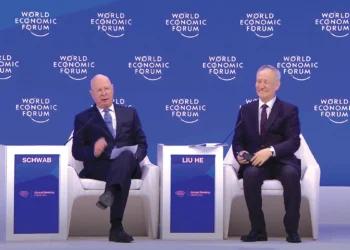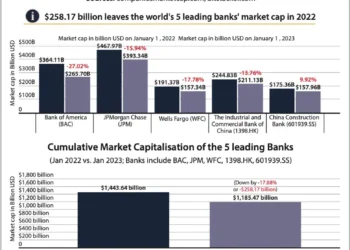Turning to India for opportunities as it transforms itself to dominate the world by becoming a great place to put capital.
January 18, 2023 Jennifer Paldano Goonewardane.
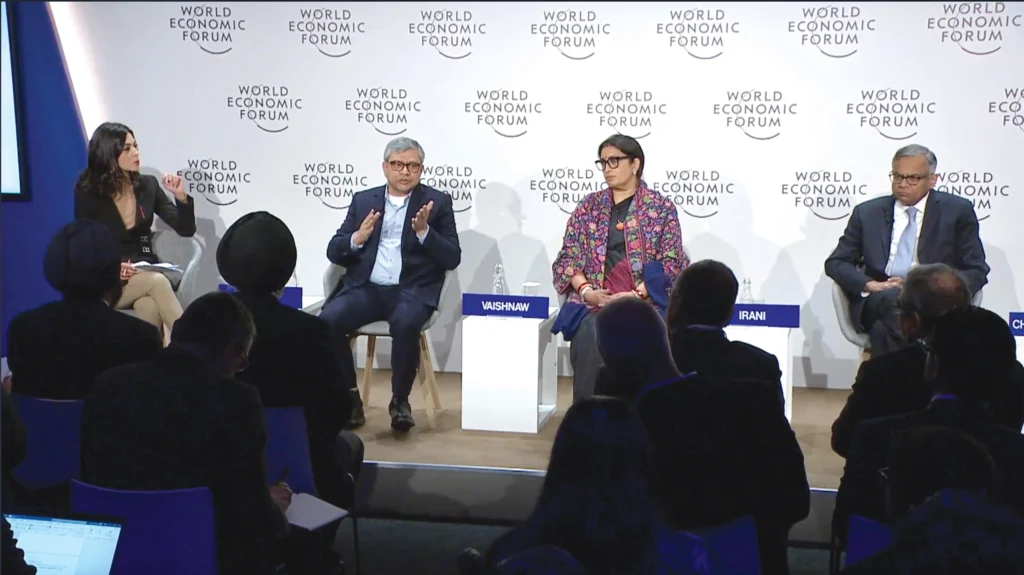
CNBC-TV18 Managing Editor Shereen Bhan; Ashwini Vaishnaw, Minister of Railways, Communications and Electronics and Information Technology, Ministry of Railways of India; Smriti Zubin Irani, Minister of Women and Child Development, Ministry of Women and Child Development of India; and Natarajan Chandrasekaran, Chairman, Tata Sons.
India is rising, and that’s no secret to anyone watching the world’s fifth-biggest economy and the world’s largest democracy claiming its place as an economy and the world’s largest democracy claiming its place as an economic superpower. India was in the spotlight at the World Economic Forum in Davos. Naturally. As the promising new star in the limelight, India has taken over the G20 presidency and is the chair of B20. India’s rise is one of the big stories dominating the promenade of the WEF. The power of courageous and patriotic leadership is the sheer will to pursue a consistent trajectory to reach its economic ambitions even amid challenging macros. At the WEF, everyone listened as India vocalized its readiness to become a $10 trillion economy by 2035, adding a trillion dollars to its economy every two years for the next 15 years.
On the cusp of transitioning into a nation that has already embraced the digital, energy, and supply chain revolution, India is ready to become a resilient global supply chain destination. To be a powerful player in an ecosystem dominated by its neighbor as developed countries attempt to break the vulnerabilities therein. It has already laid the groundwork to become an anti-fragile supply chain destination willing to operate in global disruptions regardless of magnitude. India could be the alternative geography of choice for investors as it has done away with 1,300 archaic laws from statute books and 20,000 compliance clauses from its compliance framework, accompanied by a simplified approval process. India has a consistent, multi-dimensional, resilient, and well-thought-through economic development plan.
India, rather than following the rest of the world, came up with indigenous solutions and strategized to sustain its growth momentum and stay on course to become a robust economy even amid the global vicissitudes, the COVID-19 pandemic being a primary element in that decision-making process.
“India’s Road to a $10 Trillion Economy” by World Economic Forum was developed in collaboration with CNBC-TV18 (Indian business and financial news channel). CNBC-TV18 Managing Editor Shereen Bhan hosted the discussion. Ashwini Vaishnaw, Minister of Railways, Communications and Electronics and Information Technology, Ministry of Railways of India, Smriti Zubin Irani, Minister of Women and Child Development, Ministry of Women and Child Development of India and Natarajan Chandrasekaran, Chairman, Tata Sons Pvt Ltd, told the India Story, its resilience and ability. They said India is trying to eliminate the remains of red tape and social inequalities to meet its economic potential. At Davos, India has been telling everyone that it never closes for business, not even when the COVID-19 pandemic brought the rest of the world to a standstill, a good quotient of India’s readiness to be the next global economic power.
India is the Eldorado of economic opportunities as a promising capital market for global investors in a domestic setup that has accelerated a reform agenda. India’s resolve to storm the international stage got opined in its 75th year of independence when Prime Minister Narendra Modi demanded that the nation strive for great heights and not be willing to settle for less. India should rise to dominate the world and make it a developed country in the next 25 years, is PM Modi’s determination. And at WEF, India stood with its leader, expressing its readiness to become the “new kid on the block” to drive the global economy.
India’s fascinating transitional journey under PM Modi to meet its economic potential is witnessing a developmental swell on many fronts. What has India been doing to accelerate its journey to become an economic giant? If India wants to see itself as the best capital market destination in the decade ahead, it has undoubtedly striven to lay the groundwork for a long time. According to analysts, the Indian government is spending nearly 20 percent of its fiscal year’s budget on capital investments, the most in at least a decade.
While India needs to build resilient supply chains, the operation itself is not a “lone” game. It’s an ecosystem that collaborates transparently with countries and companies willing to work with India.
Next, India is leveraging its digital transformation to create a “bridgital” nation. As the country has taken great strides in its digital transformation, it has allowed technology to be the bridge to solving some of its critical problems. It’s about using technology to deliver services and for people to access better employment opportunities. In the recent past, India’s response to the COVID-19 pandemic has been a playbook where bridgital technology has enabled the delivery of vital services to the poor and marginalized. Technology has emerged as a bridge between the overwhelming demand for critical services and an overwhelming supply of human capital in India. It’s about using the power of technology to exploit the immense potential in India’s large pool of human capital to drive employment and accessibility to services while using it to resolve issues in innovative ways.
In the meantime, India identifying the urgency for an energy transition and is aiming to add 400GW in renewables and reduce its dependency on coal by 2030, increasing its competitive advantage as an investment hub on a global scale.
The speakers at the forum highlighted specific stories from India. India’s unique one-off responses to challenging macroeconomic realities were of significant importance in their stories. India, rather than following the rest of the world, came up with indigenous solutions and strategized to sustain its growth momentum and stay on course to become a robust economy even amid the global vicissitudes, the COVID-19 pandemic being a primary element in that decision-making process. India remained adamant even when external challenges seemed overwhelming to continue its consistent and deliberate economic development plan for the future.
Pushing India’s Development Trajectory
The world is in transition on multiple dimensions, and India knows it. And India is responding on three dimensions. First, India has been focusing on building a resilient economy. As pointed out by Minister Ashwini Vaishnaw, in achieving economic resiliency, the government has pitched policy consistency to ensure that India maintains a consistent growth rate of six to eight percent for a decade. He pointed out that the country builds its policy framework for a decade-long growth trajectory with moderate inflation. Secondly, with a substantial young Indian population, the nation is looking at ways to attract supply chain participants into the country. That will go hand in hand with building resilient supply chains, driving digitization, redefining the future of work and new skill sets, building R&D capabilities, and ensuring financial inclusion. As the chair of B20, India hopes to drive those initiatives globally by implementing impactful initiatives based on these identified areas. The third dimension that India is focusing on is engendering energy transition.
In the ensuing humanitarian and economic crisis of COVID-19 that engulfed the world, governments followed two approaches to dealing with the situation. One course was to give people money to augment consumption and thereby help lift a sagging market. Many countries pumped in enormous liquidity where the combined increase in the Feds, ECB, and the Japanese Central Bank balance sheets was nine trillion US$. That led to a sugar-rush growth but plunged many economies into unprecedented inflation, which is bound to remain for a while as pushing liquidity up is easier than trying to take it out. The process is generally painful, explained Minister Vaishnaw. India differed in that sense.
India, on the contrary, adopted a pragmatic approach. Given that every economy has fiscal constraints of limited capital, India chose to use its money wisely, demonstrating PM Modi’s pragmatism. According to Minister Vaishnaw, Prime Minister Modi followed an approach of limited and focused consumption targeting the most vulnerable groups in the country.
What was PM Modi’s focused consumption? PM Modi deferred from the rest of the world by selectively spending India’s capital on focused consumption and support to the most vulnerable groups, which included 800 million people receiving aid in the form of wheat, rice, or similar products and another 320 million receiving financial assistance. The program, executed through an existing network of more than 500,000 fair-price shops, local governments, self-help groups, and citizen-oriented organizations to distribute food, is continuing into its third year. The food aid program had multiple benefits preventing starvation and people from falling into poverty while it helped the government to revive the economy and continue its targeted growth program. Modi’s welfare program extended to providing vaccine access to vulnerable groups, providing 1.4 billion doses of free vaccine in the first 14 months of the pandemic, a feat executed in its entirety on a digital platform.
The most important outcome of PM Modi’s decision-making was that he could push the entire country’s capital into infrastructure expansion with limited and focused consumption focusing on vulnerable people.
That included the development of railways (a CAPEX of US$ 23 billion in FY22, reaching US$26 billion at the end of FY23), highway, and power transmission projects. The payback of investing the country’s capital in infrastructure expansion increases the country’s productivity leading to an improvement in the long- term growth potential of the country. That strategy has also led to employment generation with the monthly addition of 1.5 million jobs in the formal sector. The PM’s pragmatic approaches have led to a consistent growth path of six to eight percent annually for several years. India has managed to keep a moderate inflationary rate of five to seven percent as a large part of its energy requirements is imported. The country is experiencing a reasonable inflationary rate of 5.9 percent. Amid the enormous global challenges, the pandemic and its fallout being the most significant, PM Modi’s practical decisions have shaped India’s destiny in the last few years, helping it to maintain high growth momentum and moderate inflation.
India’s COVID-19 pandemic story demonstrates its political strength to withstand the pressure to seek recourse externally. Led by robust leadership and government, the administration believed in its industries to rise to thatoccasion. The administration believed in the ability of its industries to fulfill a domestic need.
Fiscal Consolidation is a Critical Priority in the Future
A critical future trajectory for the Indian Government is to sustain the growth momentum while restoring fiscal consolidation, according to analysts. As recently as December 2022, the IMF had warned that India’s debt-to-GDP ratio, which tipped at 89 percent in 2021, would remain high in the medium term. However, echoing the government sentiment of its commitment to reduce the fiscal deficit, Minister Vaishnaw pointed out that gradual fiscal consolidation has remained integral for the administration. A critical factor in PM Modi’s decision-making framework is ensuring that monetary and fiscal policy work in tandem. There is no compulsion upon the Indian Central Bank to resort to drastic interest rate reductions or exponential or sudden rises. A very moderate and balanced view of the ground
realities helped the Central Bank of India maintain a positive balance sheet of the central government. The central government’s liabilities are only 52 percent of the GDP, with a very positive nominal GDP growth of 12 percent, which the Minister said the government sees as a very positive situation to be in now. While fiscal consolidation is a priority, the government considers growth and moderate inflation as the primary driver of decision-making. The government has shown signs of returning to fiscal consolidation in its 2022/2023 budget to combine the monetary and fiscal policy to create the needed momentum for the next ten years while focusing on the expansion of infrastructure to support its ambitious path to long-term growth.
Leveraging the Three Global Transitions – Becoming a Resilient Player in Collective Supply Chains
India, like every other country in the world, developed and developing, is on the cusp of three monumental changes, which are digital, energy, and supply chain transition. According to Tata Chairman and B20 chair Natarajan Chandrasekaran, India is in a unique position to make those transitions. Second, he said India has ably demonstrated its tech transition in the past three years. India’s gargantuan tech sector positions itself uniquely at the forefront of digital evolution.
It has a vast talent pool and churns out the world’s highest number of tech graduates. Third, in the last decade, India has demonstrated its ability to leverage technology for development projects and public service delivery at scale, exemplified by how the state handled the COVID-19 crisis at best. He said that he sees this enormous transition as a transition in attitudes. A change in mindset. He explained that when countries opted to purchase Pfizer or Moderna COVID-19 vaccines when India of the past would have run helter-skelter to do the same, at the pandemic’s peak, the country had the mettle to develop its vaccine on its own. With the expansion of large-scale digital transformation projects, that attitude has placed India on a solid footing.
India is also well placed in stimulating the route to make the energy transition, as pointed out by Chandrasekaran, the only nation of scale where two-thirds of its growth in the next 25 years is going to come. The energy per capita is the lowest in the world.
As India is poised to increase energy consumption in the future, India is creating new energy sources for development. Growth fixes every problem, said Chandrasekaran who emphasized that the three priorities should be growth, growth, and growth. India has a tremendous opportunity, more than any other nation, to make that transition.
Given that geopolitical dynamics are reshaping globalization and as countries look to diversify their businesses to alternative destinations other than China through the China-Plus-One strategy, there is much rumbling on India pushing to become the ideal alternative. However, Chandrasekaran, who has spoken earlier on the idea of an “India Plus” opportunity in every industry, pointed out that India’s story should not be about replacing somebody else. The world is looking for resilience. Resilience has to take precedence over efficiency. In the last 50 years, he said India has driven efficiency beyond belief, which needs to stop. India now needs to become effective first and, secondly, efficient. India Plus is about India taking the lead to build resilient supply chains for every industry.
However, Chandrasekaran pointed out that while India needs to build resilient supply chains, the operation itself is not a “lone” game. It’s an ecosystem that collaborates transparently with countries and companies willing to work with India. For Chandrasekaran, India Plus is about India taking the lead to build the ecosystem to become an alternate resilient supply chain for the world. It is a status and more than just replacing somebody else.
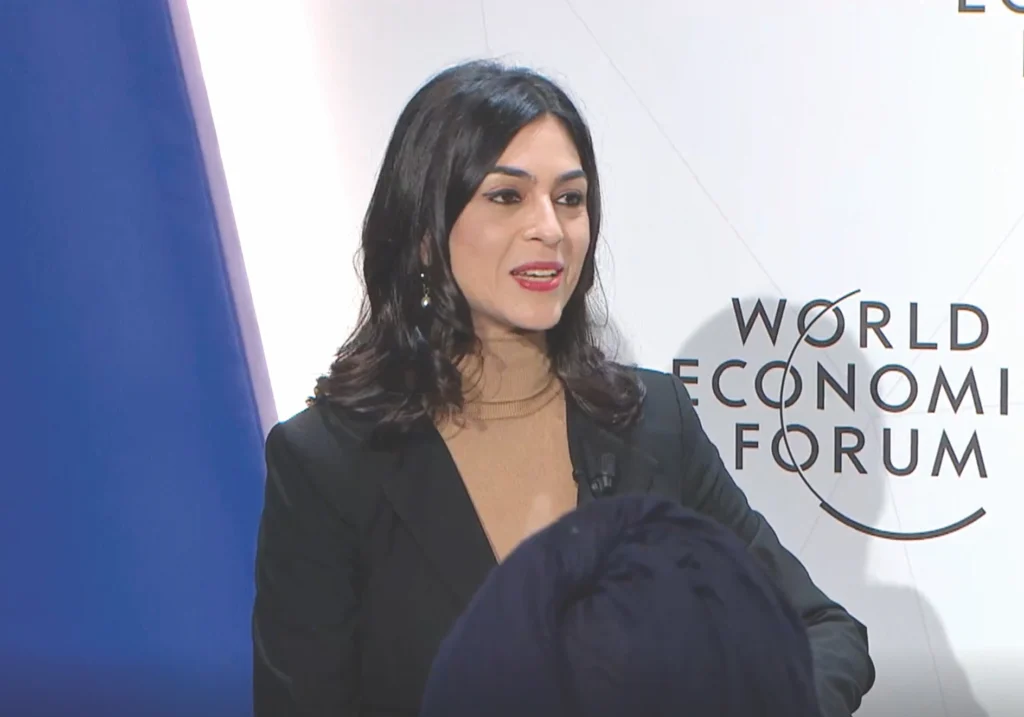
CNBC-TV18 Managing Editor Shereen Bhan
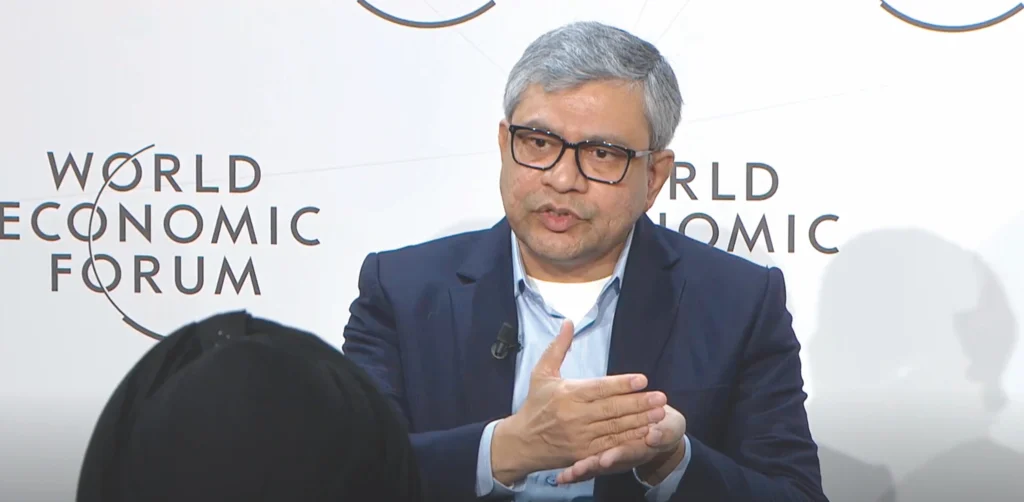
Ashwini Vaishnaw, Minister of Railways, Communications and Electronics and Information Technology, Ministry of Railways of India.
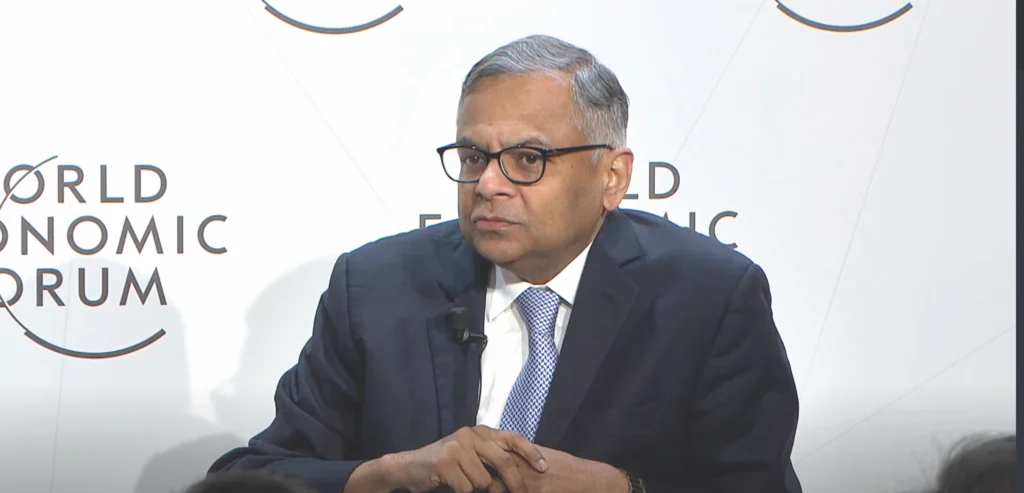
Natarajan Chandrasekaran, Chairman, Tata Sons.
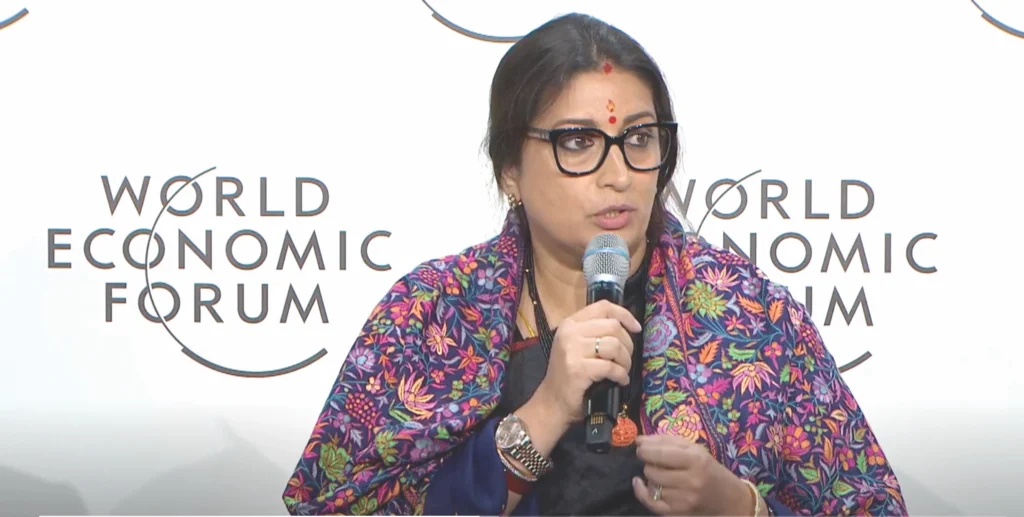
Smriti Zubin Irani, Minister of Women and Child Development, Ministry of Women and Child Development of India.



